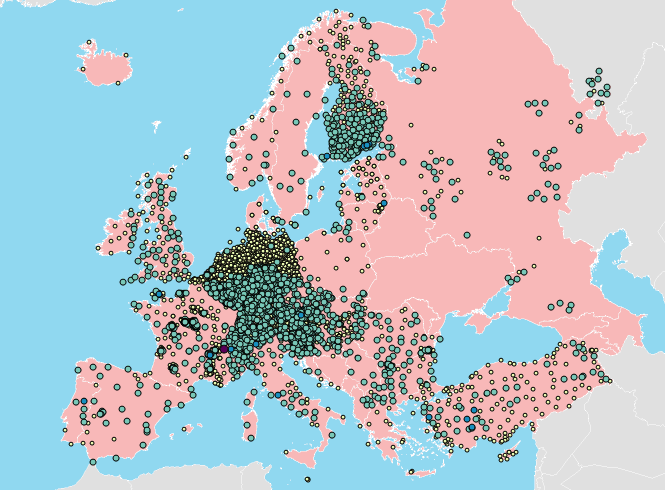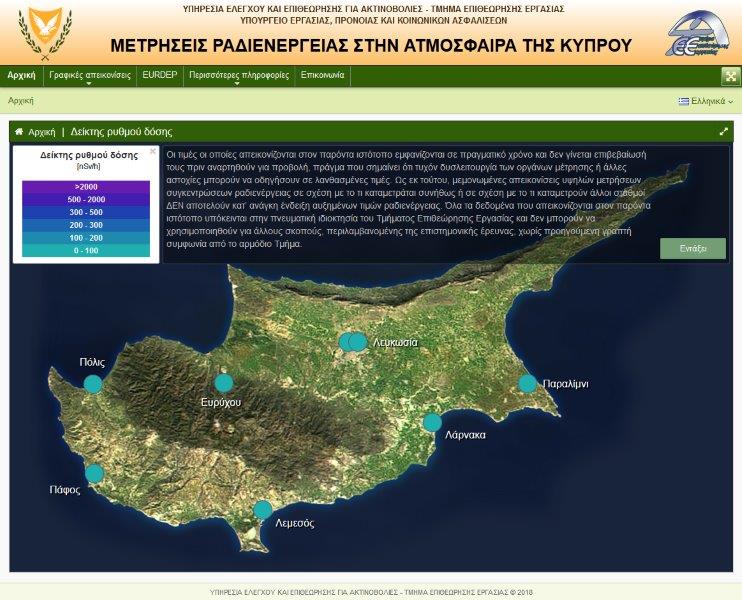Article 35 of the
Euratom (European Atomic Energy Community) Treaty provides that "each Member State shall establish the facilities necessary to carry out continuous monitoring of the level of radioactivity in the air, water and soil and to ensure compliance with the
basic standards". Based on the same article of the Treaty, "the European Commission shall have the right of access to such facilities; it may verify their operation and efficiency". Also, based on Article 36 of the Treaty, the appropriate authorities of the Member States shall periodically communicate information on the checks referred to in Article 35 to the Commission so that it is kept informed of the level of radioactivity to which the public is exposed.
Pursuant to Section 9 of the
Protection against Ionising Radiation and Nuclear and Radiological Safety and Protection Law of 2018, the Radiation Inspection and Control Service (RICS) is responsible to monitor the levels of radioactivity in air, soil, water, sea, food, feed, building materials and other products and goods, through an appropriate environmental monitoring programme and to ensure the implementation of appropriate protection measures, when appropriate.
RICS operates since 2006 a dedicated telemetric network for environmental radioactivity monitoring in the atmosphere of Cyprus, which also serves as the early warning system of the country in case of a radiological incident or a nuclear accident. The network was upgraded in 2009, in 2012, in 2017 and in 2023 and consists of seven local stations measuring ambient gamma dose rate, a portable autarkic spectroscopic station measuring concentration of gamma radioisotopes, and a stable spectroscopic station measuring artificial alpha and beta radiation, radon and gamma radioisotopes concentration in aerosol.
The telemetric network is also connected to the
EURDEP network (European Radiological Data Exchange Platform) and automatically sends hourly data to the Joint Research Centre (JRC) of the European Union in Ispra, Italy. Environmental radioactivity data is also sent to the EU radiological information database
REM (Radioactivity Environmental Monitoring) on an annual basis. In 2015, the European Commission launched its
new website for the EURDEP network. Also, the European Commission publishes occasionally
reports with environmental radioactivity data submitted to the REM database from all EU Member States.

(From the official website of the EURDEP network, European Commission)
The national environmental radioactivity monitoring network includes, further to the above telemetric network, three automatic low-volume air sampling pumps, in Nicosia, in Limassol, and in Paralimni, used for gross-beta radioactivity measurements in the atmosphere. It also includes one manual-filter change and two automatic high-volume sampling pumps, in Nicosia, in Paralimni and in the Akamas area, used for real-time monitoring of gamma radioisotope concentrations in the atmosphere, especially for the artificially-produced radioisotopes, such as Cs-137, Cs-134 and I-131, which are likely to be detected in the atmosphere in case of a nuclear or other radiological incident. Portable equipment is also available for investigations and measurements of radioactivity in the environment and in workplaces.
RICS performs sampling and measurements of radioactivity levels in soil, water, marine environment, foodstuff, feedings stuff, building materials and in various goods, in cooperation with the State General Laboratory (SGL) and the Department of Fisheries and Marine Research (DFMR).
After the
nuclear accident in Fukushima, Japan, in 2011, in the framework of
existing legislation and relevant Euratom Regulations and Decisions [
1,
2] that apply directly in Cyprus, and in cooperation with other government services, RICS applied a special inspection programme, sampling and radioactivity measurements, concerning products imported from Japan and neighbouring areas. Similar measurements were made for other products following the
nuclear accident at Chernobyl in Ukraine (former USSR) in 1986.
Apart from the Euratom Treaty and the Basic Safety Standards, the
Recommendation 2000/473/Euratom adopted in 2000 by the European Commission, providing guidance to EU member states on monitoring the levels of radioactivity in the environment to assess exposure of the population as a whole, is also relevant to the issue.
The environmental radioactivity monitoring and early warning system has been verified four times in the past (in 2006, in 2008, in 2015, and in 2023) by the
European Commission, under Articles 35 and 36 of the
EURATOM Treaty (i.e.
EURATOM Treaty Article 35/36 verification visits), and the Commission published relevant
reports.
The report issued by RICS with environmental radioactivity measurements for the years 2004-2009 is available
here (in Greek). RICS has also issued in January 2017 a new report on environmental radioactivity data for the years 2010-2015, which is available
here (in Greek). This data is also supplemented by data
published by the European Commission from all European countries, to which Cyprus contributes regularly on a yearly basis.
In April 2018, RICS launched its specialized website, which provides real-time information on radioactivity measurements in the atmosphere of Cyprus. The website is available in Greek and English and provides the user with the capability to graphically display the available data by measurement factor and per measurement station. The website address is
https://radiation.dli.mlsi.gov.cy/.

Department of Labour Inspection
28.12.2023